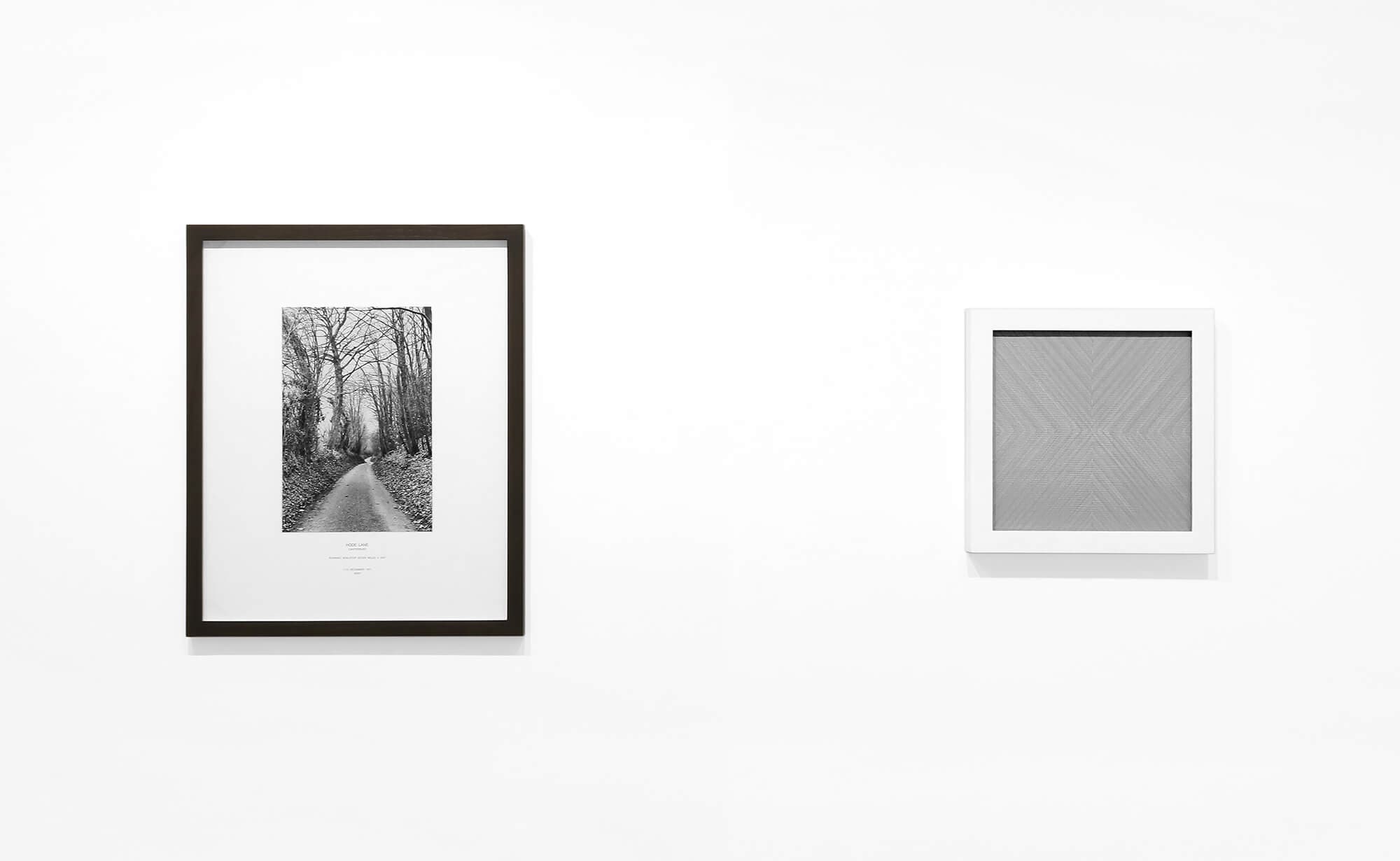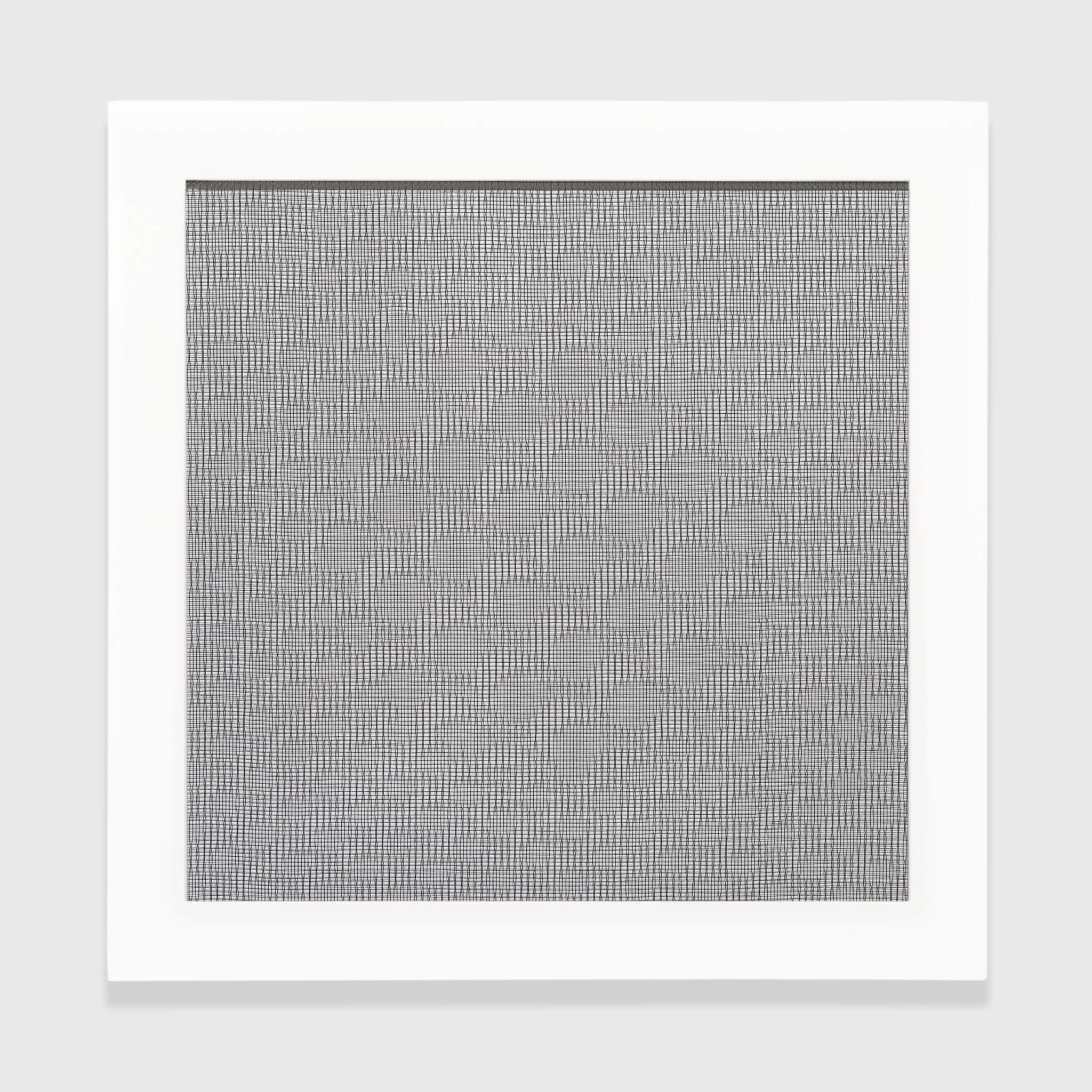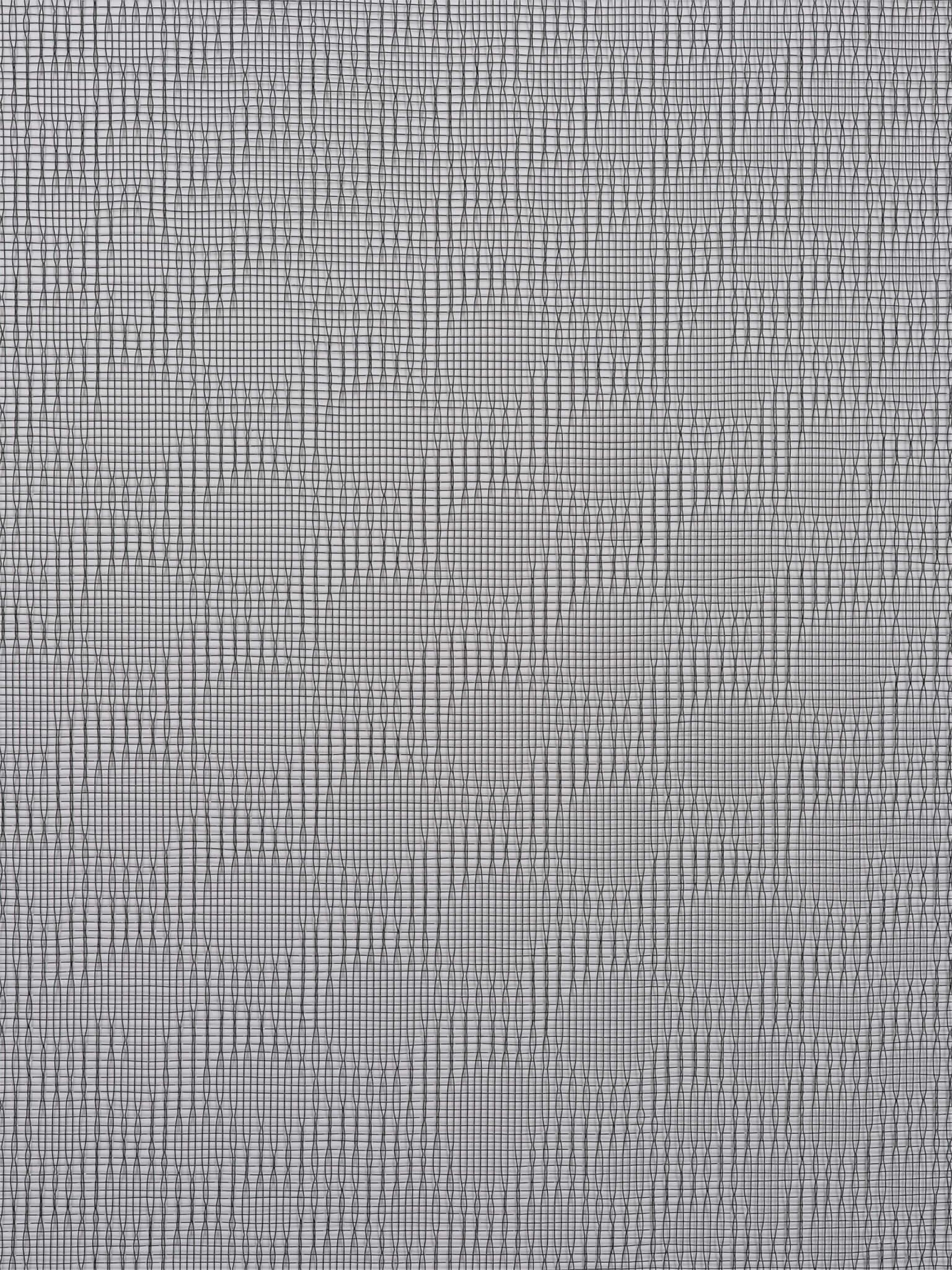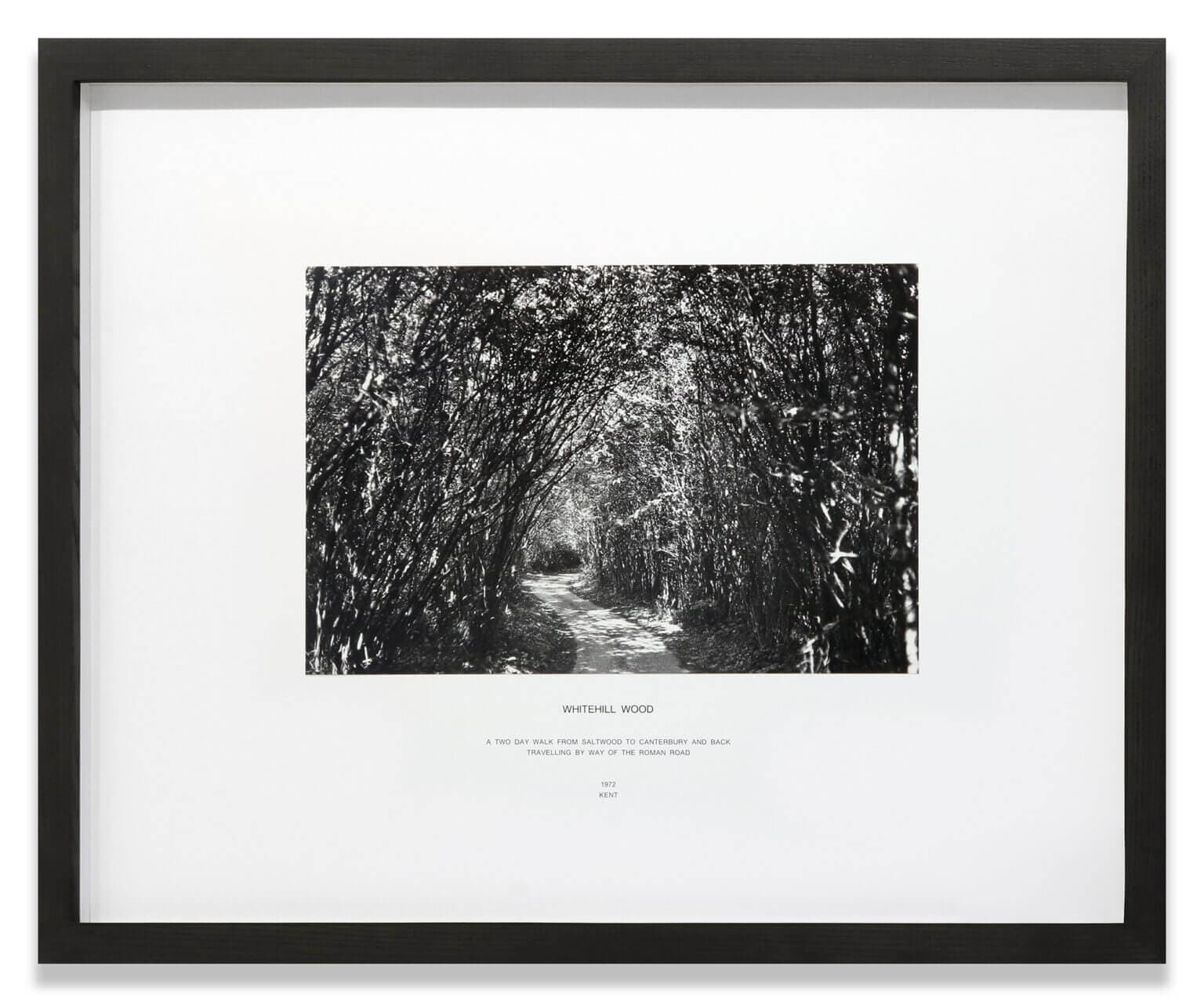In 1973 Hamish Fulton committed to “only make art resulting from the experience of individual walks.” After three decades spent amassing everyday items like tape and index cards and transforming them into otherworldly, often monumental sculptures, Tara Donovan might appear to fall on the other end of the objecthood spectrum. But in their sublime two-person show at Krakow Witkin Gallery, high-contrast photos and text referencing Fulton’s nature walks from the 1970s play perfectly against monochromatic aluminum insect screens that Donovan has clipped, pulled, and otherwise manipulated into shimmering patterns (2021–2022). Together Fulton and Donovan bring the nuance of twentieth-century conceptual art and minimalism to bear on present-day trials like climate breakdown and the isolating effects of spending our days on screens.
Online • Jul 17, 2024
Two Sides of Summer: “Tara Donovan and Hamish Fulton” at Krakow Witkin Gallery
In a joint exhibition, the two artists bring the nuance of twentieth-century conceptual art and minimalism to bear on present-day trials like climate breakdown and the isolating effects of spending our days on screens.
Quick Bit by Helen Miller
(left) Hamish Fulton, Hode Lane from Crossing the English Channel, 1971, printed 1976. 9 ⅝” x 14 ⅜”. Text reads: Hode Lane Canterbury / Running non-stop seven miles a day / 7–13 December 1971 / Kent . (right) Tara Donovan, Screen Drawing, 2021. Aluminum insect screen. 15 ½” x 15 ½” x 1 ¼”. Installation view, “Tara Donovan and Hamish Fulton,” Krakow Witkin Gallery. On view through July 19, 2024. Courtesy of Krakow Witkin Gallery, Boston

(left) Hamish Fulton, Hode Lane from Crossing the English Channel, 1971, printed 1976. 9 ⅝” x 14 ⅜”. Text reads: Hode Lane Canterbury / Running non-stop seven miles a day / 7–13 December 1971 / Kent . (right) Tara Donovan, Screen Drawing, 2021. Aluminum insect screen. 15 ½” x 15 ½” x 1 ¼”. Installation view, “Tara Donovan and Hamish Fulton,” Krakow Witkin Gallery. On view through July 19, 2024. Courtesy of Krakow Witkin Gallery, Boston

Tara Donovan, Screen Drawing, 2021. Aluminum insect screen. 15 ½” x 15 ½” x 1 ¼”. Courtesy of Krakow Witkin Gallery.

Tara Donovan, Screen Drawing (detail), 2021. Aluminum insect screen. Courtesy of Krakow Witkin Gallery.
A refreshingly unsentimental spin on fiber art, Donovan’s Screen Drawings look more techy than textural. Evoking associations high and low, the holographic gray squares are reminiscent of TV static, or early video games on Atari, and also serve as a fitting homage to the pioneering minimalist Agnes Martin’s ink-and-graphite grids. And, of course, fraying household screens come to mind as a foil for the work. The effects of light, scale, and other formal feats are often foregrounded in discussions of Donovan’s sculpture, but there is a sense of nostalgia, perhaps even an emo vibe, to this installation of modestly sized work on the wall. The Screen Drawings here were made during the pandemic, and presented alongside Fulton’s elegiac markers for ephemeral journeys, their moodier side shines through. Not that the precious, process-driven achievement of Donovan’s postmodern weaving is any less impressive for the company; rather, an element of ecstasy characterizes both artists’ work.

Hamish Fulton, Whitehill Wood from Crossing the English Channel, 1972, printed 1976. 14 ⅜” x 9 ⅝”. Text reads: Whitehall Wood / A two day walk from Saltwood to Canterbury and back traveling by way of the Roman road / 1972 / Kent. Courtesy of Krakow Witkin Gallery.
The rhythmical spaces opened up in Donovan’s Screen Drawings are not portals into another dimension. Her handiwork is a bulwark. The surface changes make the screens more opaque rather than less. The exhibition text mentions the theme of windows, and if Donovan’s window is closed, then Fulton’s remains wide open. The well-worn paths in his beautifully lit photographs are romantic reminders of landscape painting, literature, and walking in open spaces. One can easily imagine stepping onto the dappled trail in Whitehill Wood from Crossing the English Channel (1972), described in a handsome sans serif font as “a two day walk from Saltwood to Canterbury and back traveling by way of the Roman road.” Fulton’s practice is an ode to the natural world and our place within it, while Donovan’s Screen Drawings make studio work out of the impenetrability of interior life.
“Tara Donovan and Hamish Fulton” is on view at Krakow Witkin Gallery June 15–July 19, 2024.
